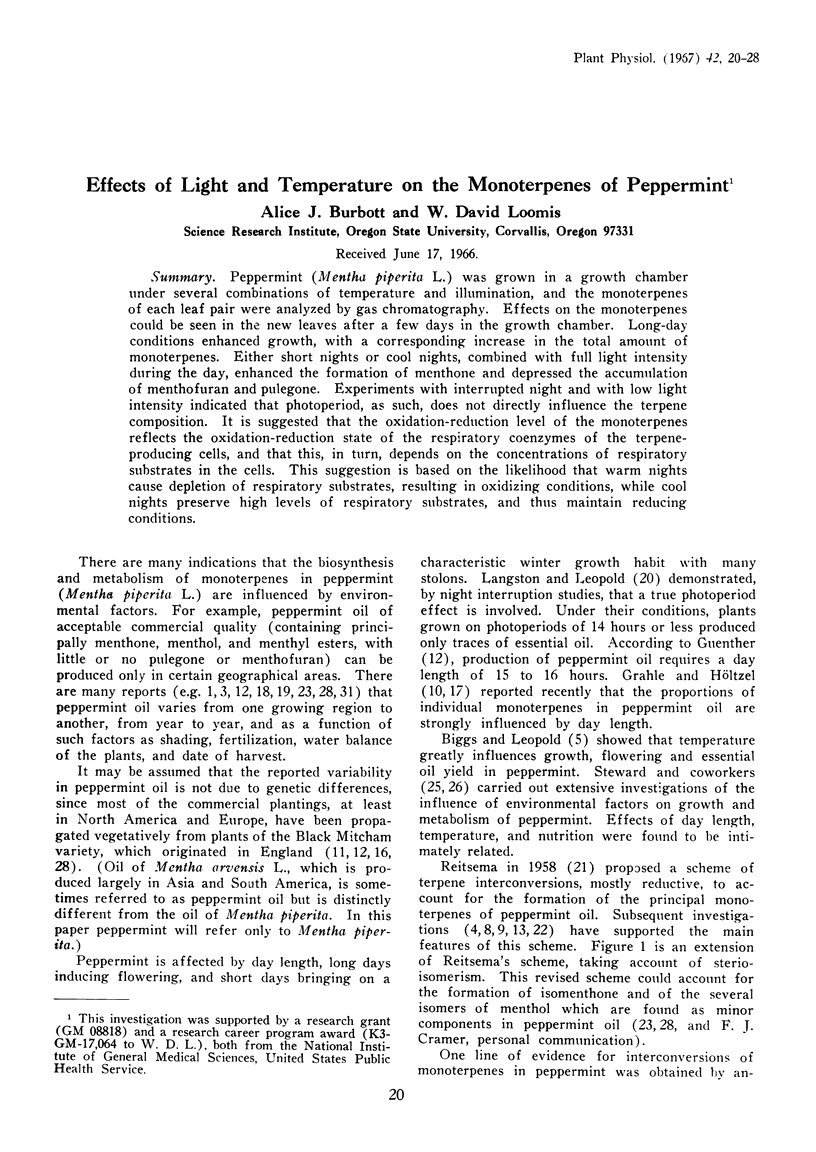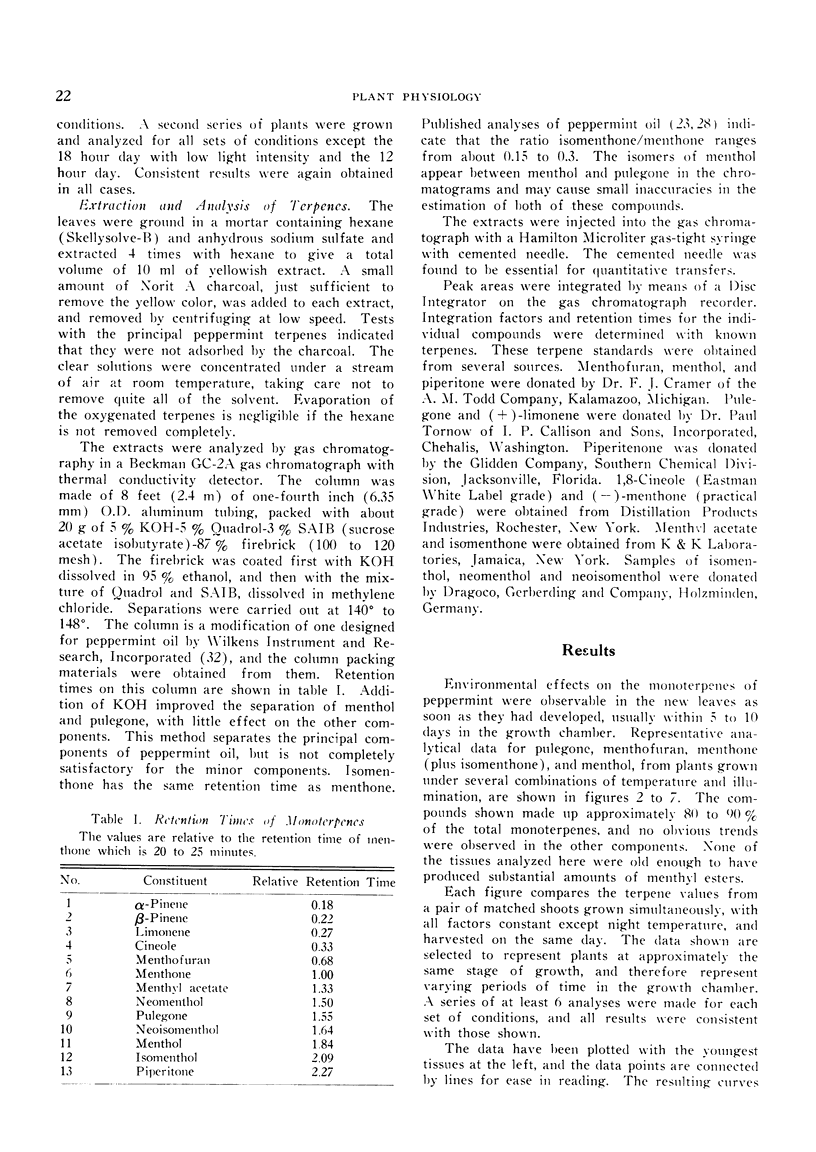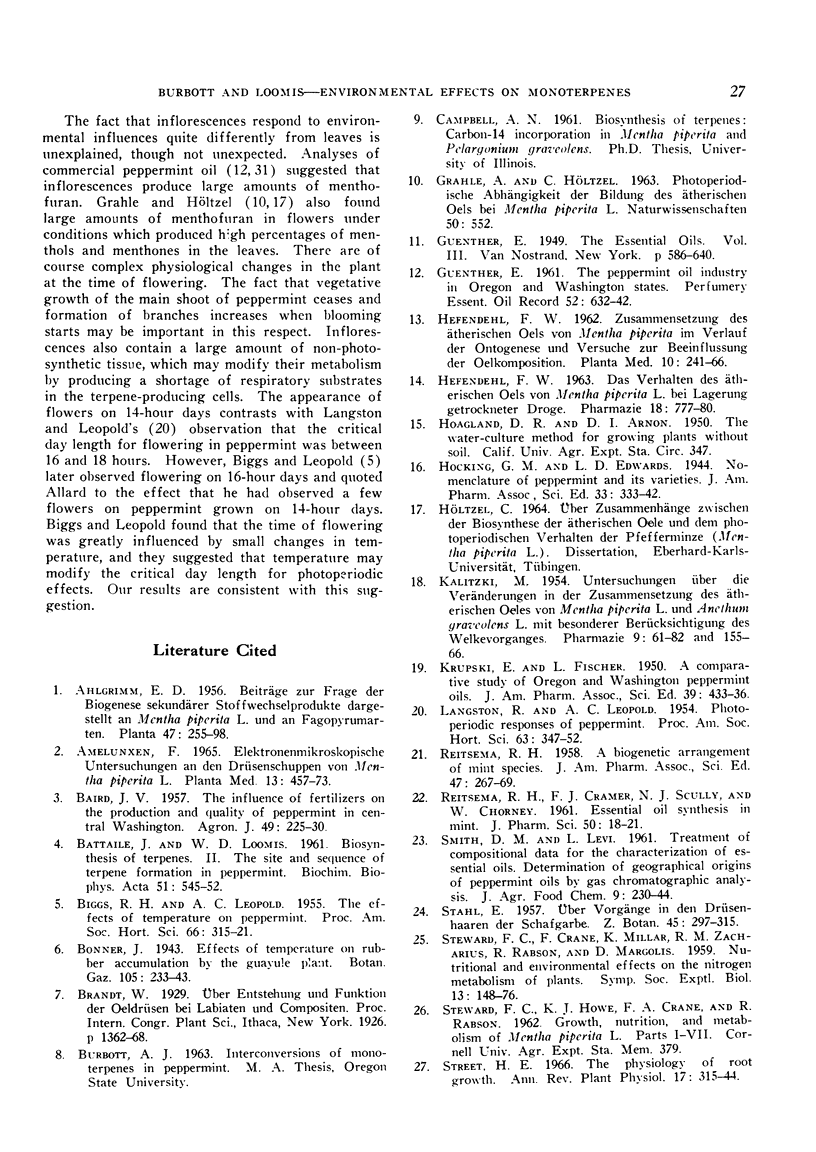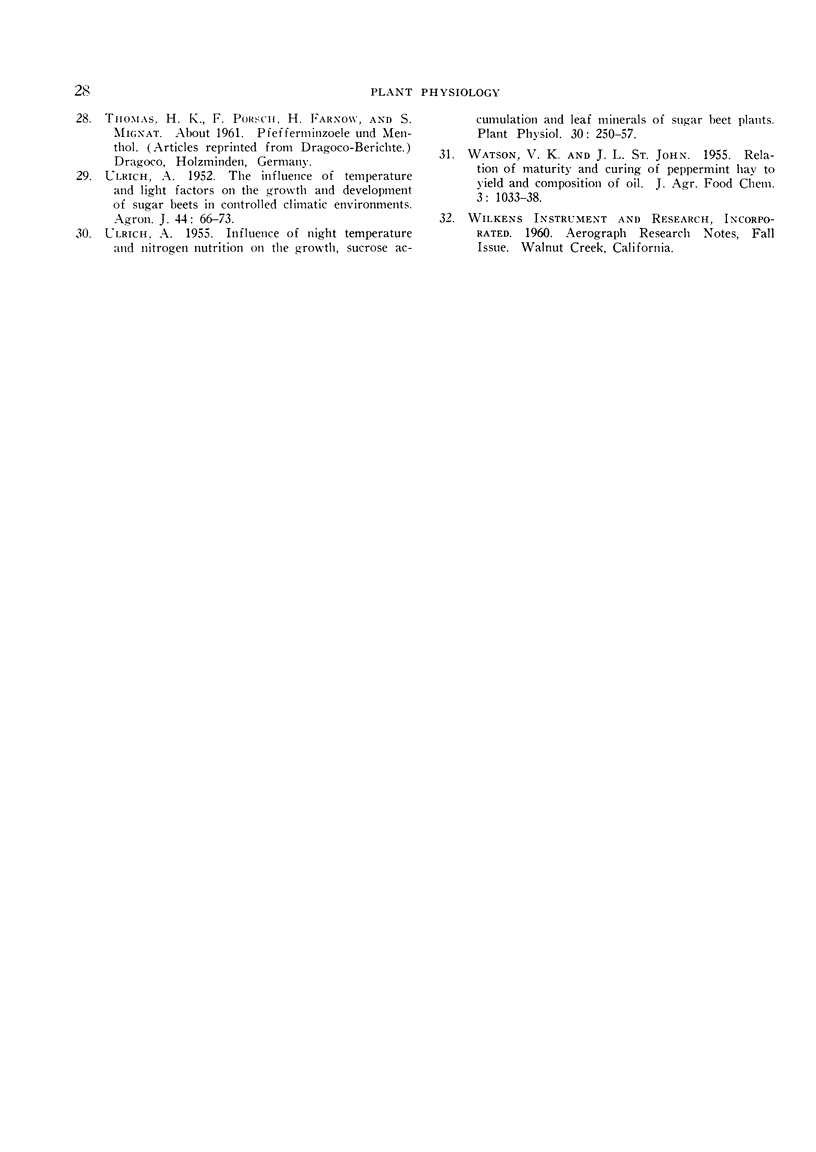Abstract
Peppermint (Mentha piperita L.) was grown in a growth chamber under several combinations of temperature and illumination, and the monoterpenes of each leaf pair were analyzed by gas chromatography. Effects on the monoterpenes could be seen in the new leaves after a few days in the growth chamber. Long-day conditions enhanced growth, with a corresponding increase in the total amount of monoterpenes. Either short nights or cool nights, combined with full light intensity during the day, enhanced the formation of menthone and depressed the accumulation of menthofuran and pulegone. Experiments with interrupted night and with low light intensity indicated that photoperiod, as such, does not directly influence the terpene composition. It is suggested that the oxidation-reduction level of the monoterpenes reflects the oxidation-reduction state of the respiratory coenzymes of the terpene-producing cells, and that this, in turn, depends on the concentrations of respiratory substrates in the cells. This suggestion is based on the likelihood that warm nights cause depletion of respiratory substrates, resulting in oxidizing conditions, while cool nights preserve high levels of respiratory substrates, and thus maintain reducing conditions.
Full text
PDF








Selected References
These references are in PubMed. This may not be the complete list of references from this article.
- BATTAILE J., LOOMIS W. D. Biosynthesis of terpenes. II. The site and sequence of terpene formation in peppermint. Biochim Biophys Acta. 1961 Aug 19;51:545–552. doi: 10.1016/0006-3002(61)90612-6. [DOI] [PubMed] [Google Scholar]
- HEFENDEHL F. W. DAS VERHALTEN DES AETHERISCHEN OLS VON MENTHA PIPERITA L. BEI LAGERUNG GETROCKNETER DROGE. Pharmazie. 1963 Nov;18:777–780. [PubMed] [Google Scholar]
- KALITZKI M. Untersuchungen über Veränderungen in der Zusammensetzung des ätherischen Oles von Mentha piperita L. und Anethum graveolens L. mit besonderer Berücksichtigung des Welkevorganges. II. Pharmazie. 1954 Feb;9(2):155–166. [PubMed] [Google Scholar]
- KRUPSKI E., FISCHER L. A comparative study of Oregon and Washington peppermint oils. J Am Pharm Assoc Am Pharm Assoc. 1950 Aug;39(8):433–436. doi: 10.1002/jps.3030390804. [DOI] [PubMed] [Google Scholar]
- REITSEMA R. H., CRAMER F. J., SCULLY N. J., CHORNEY W. Essential oil synthesis in mint. J Pharm Sci. 1961 Jan;50:18–21. doi: 10.1002/jps.2600500104. [DOI] [PubMed] [Google Scholar]
- Ulrich A. Influence of Night Temperature and Nitrogen Nutrition on the Growth, Sucrose Accumulation and Leaf Minerals of Sugar Beet Plants. Plant Physiol. 1955 May;30(3):250–257. doi: 10.1104/pp.30.3.250. [DOI] [PMC free article] [PubMed] [Google Scholar]


